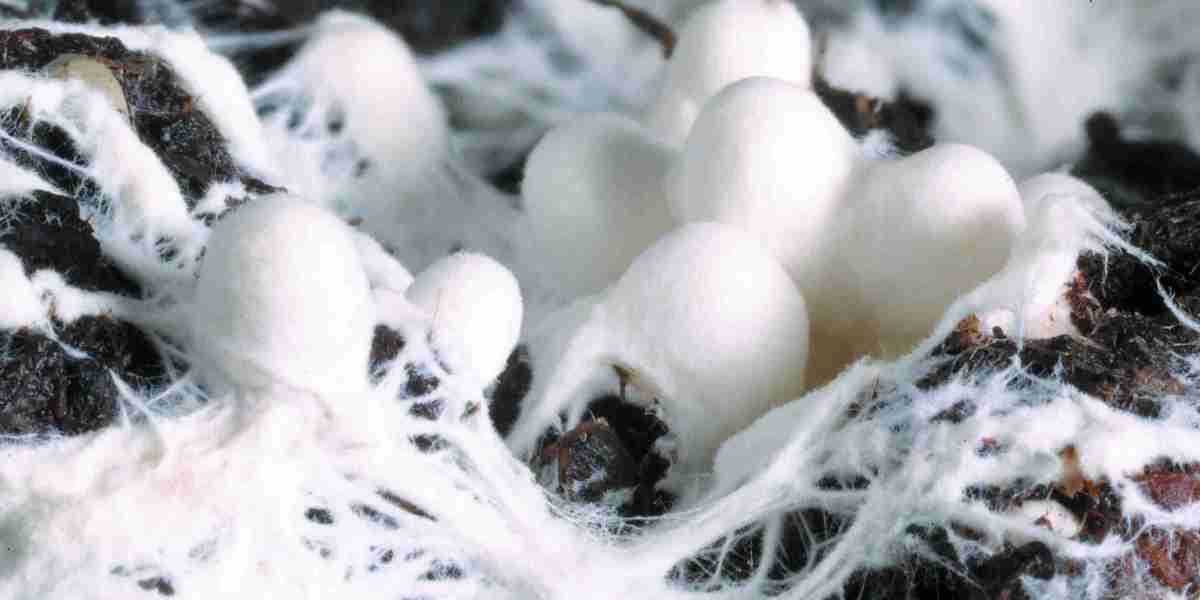The mycelium market, a dynamic segment within the broader biotechnology and sustainable materials sectors, has witnessed remarkable growth in recent years. Driven by the increasing demand for eco-friendly alternatives to plastics, advanced building materials, and innovative applications in healthcare, mycelium presents considerable promise. However, there are several inherent challenges within the mycelium market that could impede its long-term success. These challenges span a range of economic, technological, environmental, and regulatory factors that will need to be addressed for continued innovation and growth.
1. Commercialization of Mycelium Products
One of the most significant hurdles facing the mycelium market is the challenge of commercializing mycelium-based products. Although mycelium has demonstrated remarkable potential as a sustainable material, it is still in the early stages of industrial-scale production. Transitioning from research and development (R&D) to mass-scale manufacturing involves large investments and time to optimize production processes. Companies must innovate to scale production efficiently while maintaining product quality and affordability. Even though a few players have already entered the market with promising products, widespread adoption will depend on solving these operational challenges.
2. High Costs of Production
While mycelium offers an attractive environmentally friendly alternative to petroleum-based materials, the initial production costs can be prohibitive. The processes involved in growing and harvesting mycelium can be intensive, requiring specialized equipment and technologies. Furthermore, while its agricultural cultivation may seem low-tech, producing it consistently and in large quantities requires optimal conditions that can incur significant costs, especially for businesses scaling their operations. This economic reality continues to make some of the mycelium-based products less competitive when compared to cheaper conventional materials, which limits widespread adoption.
3. Limited Infrastructure for Mycelium-Based Products
A lack of infrastructure to handle and distribute mycelium-based products also presents a considerable challenge. The growth of the mycelium market will depend on developing adequate infrastructure to support manufacturing, transportation, and waste disposal for such biodegradable products. Furthermore, there is a need for training and knowledge dissemination among manufacturers and suppliers to integrate mycelium production into their supply chains successfully. Without the appropriate systems in place to handle the logistics and provide widespread distribution, even products with high consumer demand may not reach the market effectively.
4. Regulatory and Safety Concerns
Another obstacle in the mycelium market revolves around regulatory approval and safety standards. Mycelium-based materials may require various certifications, and these processes can be time-consuming, depending on the product’s use. Regulatory frameworks differ by region, and, in some cases, new regulations may need to be designed specifically for mycelium-derived products. Moreover, as mycelium is a naturally occurring organism, it poses potential challenges in ensuring its safety for use in applications ranging from food products to construction. Ensuring compliance with food, health, and safety regulations remains a core challenge for companies wishing to explore new avenues.
5. Technological Limitations and Innovation
The mycelium market heavily relies on technological advancements to unlock further potential. With current technologies, we are still limited in terms of designing and producing mycelium products for large-scale industrial applications. Research into the most efficient growing techniques, designing better forms, and finding effective treatments to control the material’s growth are all crucial for further progress. Innovations are occurring rapidly, but until scalable production systems are developed, the mycelium market will face bottlenecks that hinder faster growth and adoption of mycelium-based applications.
6. Competition from Alternative Materials
While the mycelium market has immense potential, it is not without competition. Biodegradable alternatives, including bioplastics made from plant sources, offer similar eco-friendly benefits. As demand for sustainable materials grows, businesses in the mycelium sector will need to differentiate their products by emphasizing unique attributes, such as their growth cycle, customizable applications, and advantages in industrial use. To capture and retain a share of the market, it will be essential to continually improve the cost-efficiency and sustainability of mycelium-based materials relative to alternatives.
7. Environmental Sustainability and Scalability
Finally, one of the core selling points of mycelium-based products is their sustainability. However, the question remains whether mycelium products can be produced in ways that scale to meet global demands without compromising environmental benefits. Large-scale operations require substantial resources and could also lead to adverse environmental effects if not carefully managed. Despite the promising biodegradable nature of mycelium, issues such as energy consumption during production and land use for growing mycelium could become contentious areas that the industry must address.
Conclusion
The mycelium market has great potential across various industries, including food, agriculture, construction, and healthcare. However, multiple challenges, including high production costs, regulatory issues, limited infrastructure, technological hurdles, and competition from alternative materials, hinder the market’s growth trajectory. The continued development of mycelium as an industrial product will require addressing these barriers through collaboration, innovation, and long-term investments. As businesses continue to find sustainable solutions, the mycelium market may evolve to become a cornerstone of modern, eco-conscious production systems.



